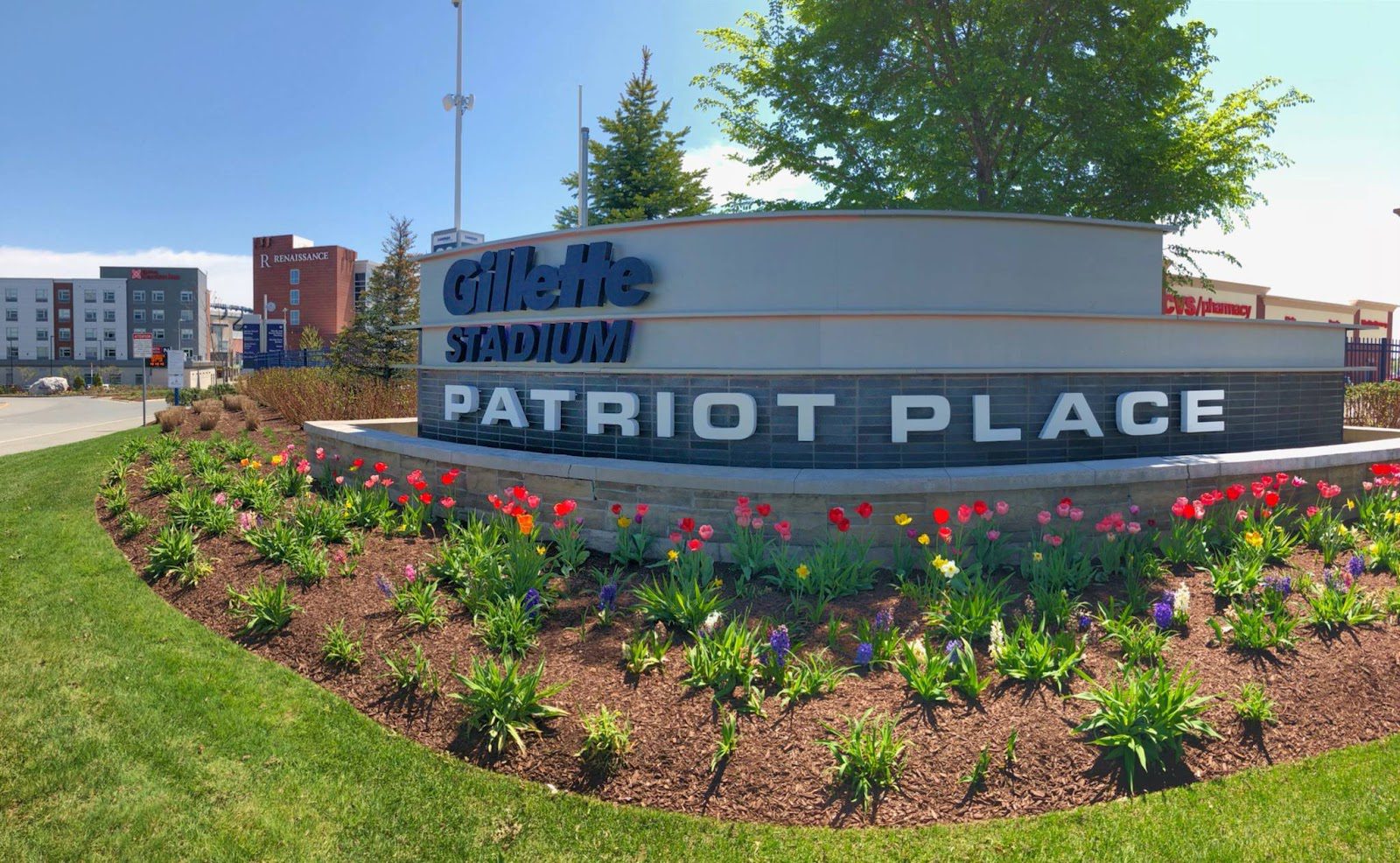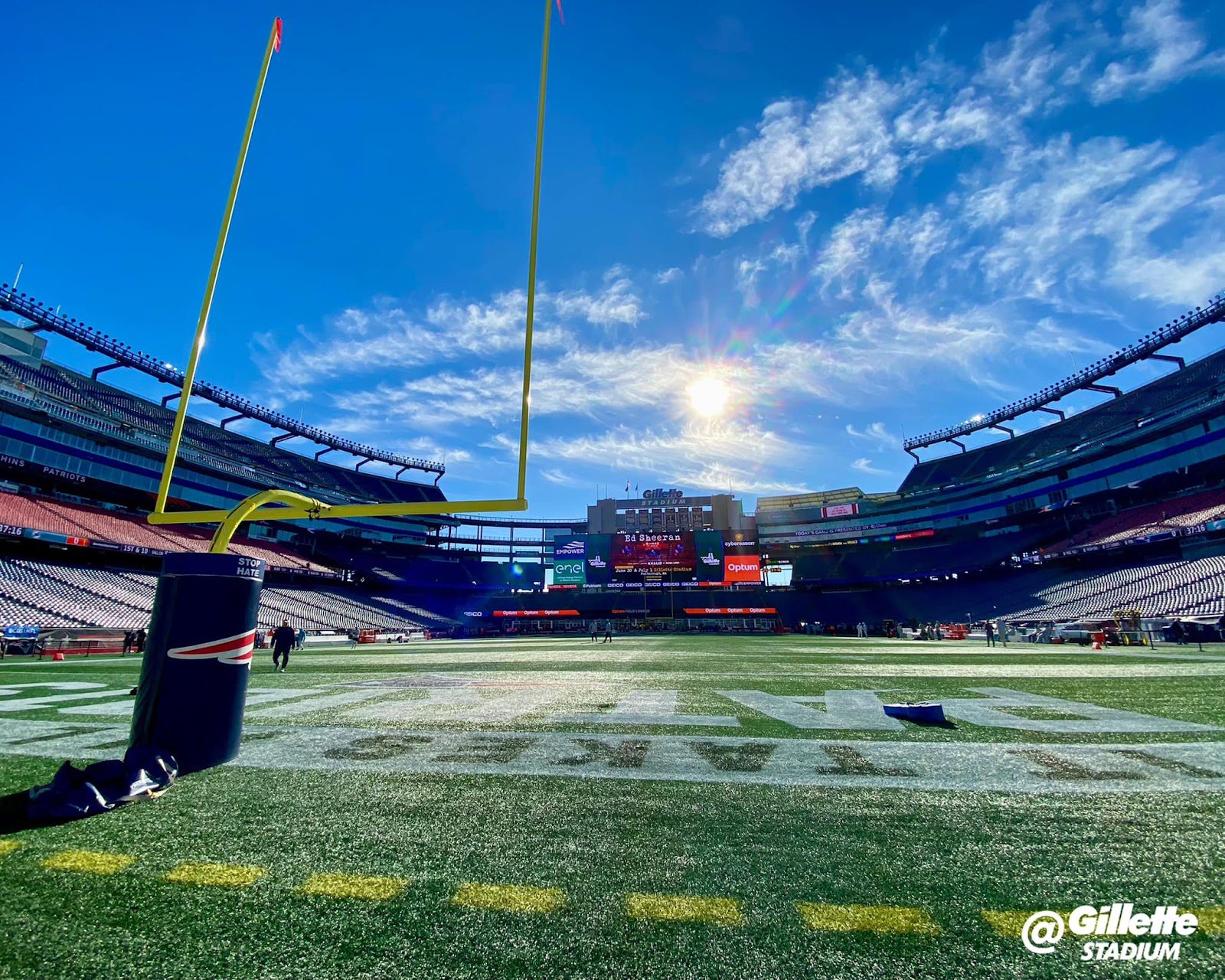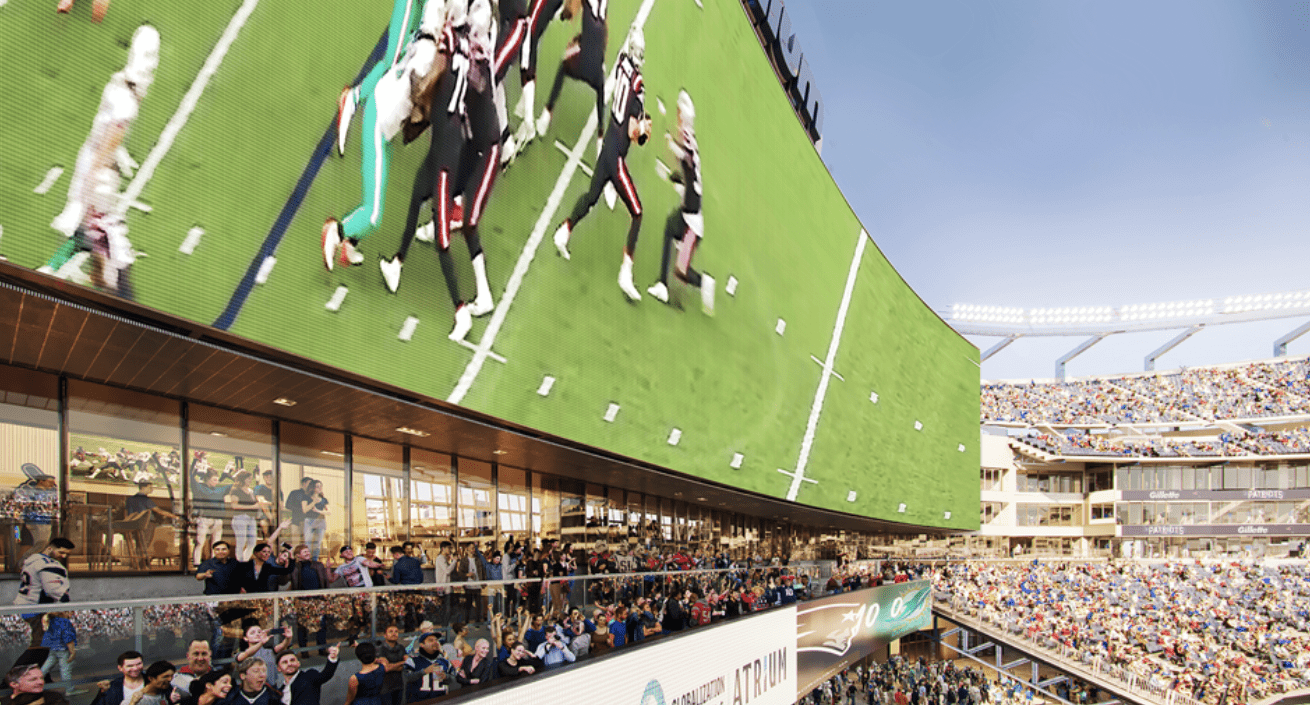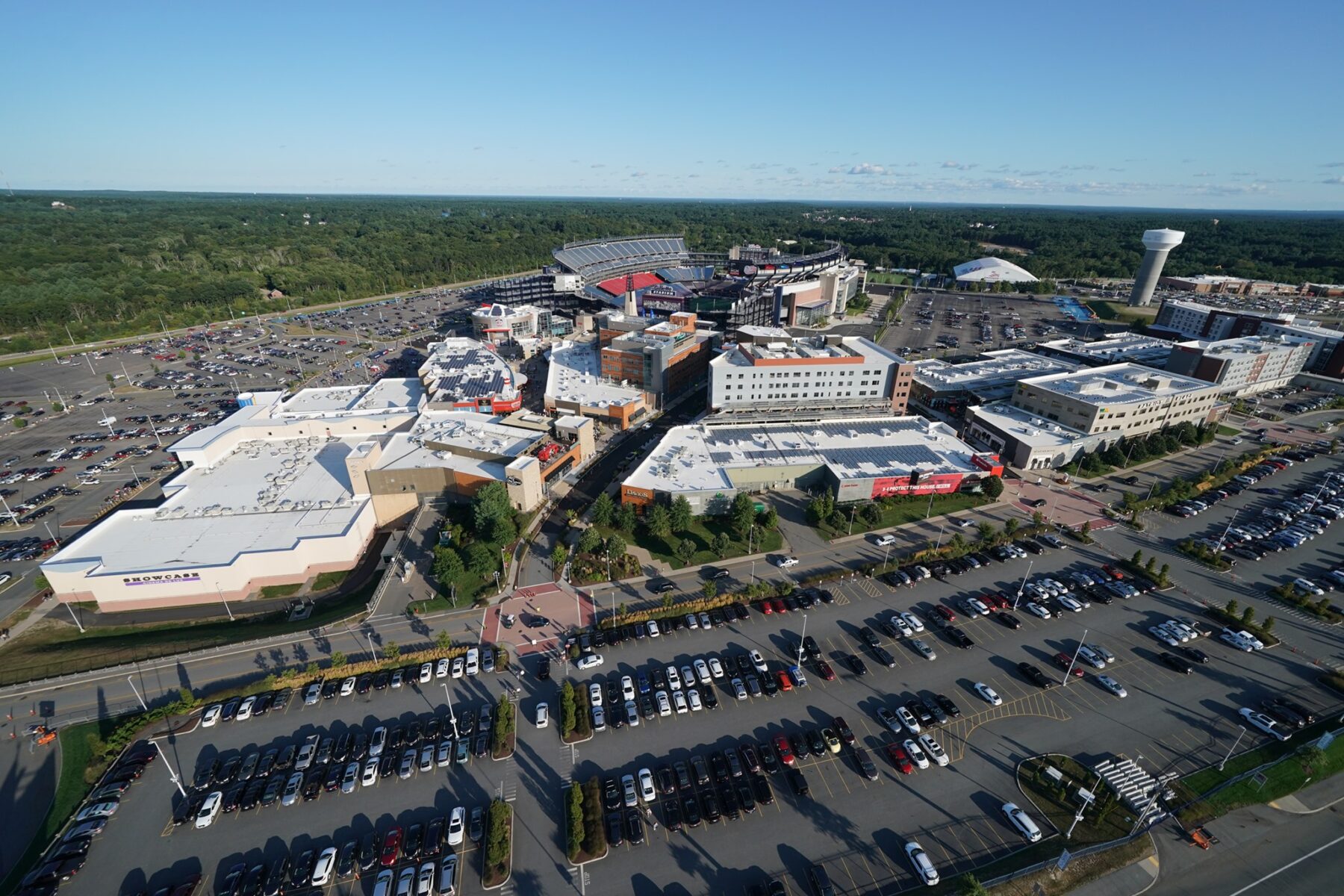One of the 21st century’s elite sports franchises, the New England Patriots have been winners on the gridiron and environmental leaders, too. The Patriots’ owners, the Kraft Group, made sustainability a cornerstone in their plans to build a new stadium in the early 2000s.

During the building of Gillette Stadium, home to the Patriots and the MLS New England Revolution soccer club, approximately 90% of the crushed construction rock was reused and kept out of landfills.
“When we built Gillette Stadium, we used a lot of recycled materials, from concrete to steel,” explained Jason Stone, senior director of operations. “Sustainability and green initiatives are a big part of our operation.”
The venue’s design included energy-saving measures, such as timing devices that turned off non-essential lighting after hours. Likewise, installing an on-site wastewater treatment facility saves millions of gallons of water annually by recycled sanitary drainage for use in toilets.
When Gillette Stadium opened in 2002, the U.S. Environmental Protection Agency honored The Kraft Group with New England’s Environmental Merit Award.
The same green approach was taken when creating the 1.3-million-square-foot entertainment/retail/dining complex, Patriot Place, next to the stadium in the late 00s. The center was built almost entirely on pre-existing parking lots, lessening its environmental impact, and all the excavated materials were repurposed as fill dirt. Paints, furniture, carpeting, and adhesives with low-emitting volatile organic compounds were also used to reduce indoor pollutants.

ENERGY STAR equipment and appliances and energy-efficient lights were incorporated throughout Patriot Place to upgrade energy usage. All the buildings have white roofs, which improves solar reflection and lowers the Heat Island Index.
While installing Big Belly Solar Compactors was done primarily to decrease waste creation, they also reduced electricity consumption. The Kraft Group also restored part of the Neponset River, a 32-acre wetland and wooded area behind the complex that contains a half-mile walking trail and the area’s only functioning cranberry bog.

In 2009, nearly 2,800 crystalline photovoltaic panels were placed on seven buildings’ roofs across the center. These solar panels supplied almost 30% of Patriot Place’s power, generating approximately 525 kilowatts of renewable solar power. This solar panel installation was named the “best renewable energy project in New England” in 2010 by the Association of Energy Engineers New England Chapter.
More solar panels and solar canopies were added in 2012 when the Kraft Group teamed with NRG Energy.
These additions upped Patriot Place’s solar-provided power to 60%. They also raised the yearly solar power production to 1.1 kWhs and cut annual carbon emissions by more than 800 metric tons.
“While our primary focus remains on creating the ultimate fan experience, we’re continually looking for new areas to make environmental improvements,” says Jim Nolan, COO of Kraft Sports + Entertainment.
These two interests overlapped in 2009 when Gillette Stadium switched from paper towel dispensers to XLERATOR hand dryers in its bathrooms, consuming 80% less energy than standard ones. These progressive initiatives contributed to the venue’s ranking among the most energy-efficient NFL stadiums in 2015.

A partnership with the clean energy company, Enel X, kicked off by installing 50 Enel X JuiceBox Pro smart charging stations in Patriot Place parking lots. These grid-connected systems can track demand and charge electric vehicles when renewable energy is most available.
Gillette Stadium, using Renewable Energy Credits (RECs) since 2007, could operate solely on clean energy for 2019’s final five home games by purchasing RECs from Enel.
In 2021, it obtained almost 900,000 kWh Enel RECs, enough to match the electricity consumption for the Patriots’ entire season and the Revolutions games.

In recent years, Gillette Stadium has developed a successful food waste diversion program, annually recycling around 200 tons of food waste that winds up being converted to food waste. The Kraft Group continues to demonstrate its commitment to sustainability.
In 2022, it began a sustainable reuse program with WIN Waste Innovations. It’s estimated that 642 tons of stadium waste were collected during the 2022 season. WIN collected and processed the trash and recyclables, offsetting the equivalent need for nearly 225 tons of coals or 770 barrels of oil.
“We have made increased sustainability a top priority since the creation of Gillette Stadium and Patriot Place, and it remains one today,” explained Murray Kohl, vice president of sales for Kraft Sports + Entertainment.





